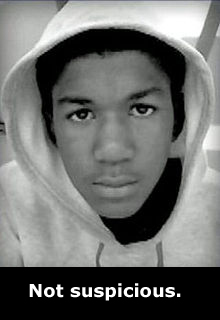So Zimmerman walks. I can’t say as I’m surprised. It is now apparently legal to kill people in Florida, particularly if your victim is black. I should say not exclusively – my neighbor spends half of his time in Florida, and he told me about a “Stand Your Ground” case at his retirement community wherein a Vietnam Vet shot his wife’s lover dead and got off based on Stand Your Ground. The victim was white, but from another country, so that may have been “other” enough for the law. It seems like if your intention is to kill someone, all you need to do is get them alone in Florida and give them the gun, so to speak. So long as there’s no witnesses, it’s your word against theirs.
That aside, let’s consider what this verdict says, in truth:
 Killer Sidewalks. The Zimmerman trial introduced the concept of the sidewalk as a deadly weapon. I suppose this means that any (black) person strolling down the sidewalk can now be considered armed and dangerous. Amazing what legal and logical gyrations we go through to exonerate a white guy who just shot a black guy dead. Who says he was unarmed? He had that deadly sidewalk!
Killer Sidewalks. The Zimmerman trial introduced the concept of the sidewalk as a deadly weapon. I suppose this means that any (black) person strolling down the sidewalk can now be considered armed and dangerous. Amazing what legal and logical gyrations we go through to exonerate a white guy who just shot a black guy dead. Who says he was unarmed? He had that deadly sidewalk!
Thirty Yards. The prosecution failed not only to discredit the defense’s story but to communicate in concrete terms an alternative story that fit the facts. Martin’s body was found something like ten yards away from the sidewalk. How could Zimmerman have been in mortal danger when the “deadly weapon” (see above) was that far away from where he shot the kid? Why wasn’t the prosecution all over this like a cheap suit?
Silent Witness. Ultimately, the defense put Trayvon Martin on trial. There is one person who knows what happened that night, and he was sitting in that courtroom wearing his stoic wannabe cop face. Sure, he has a constitutional right not to testify. But I don’t see why the prosecution couldn’t have made more of a point of his reluctance to testify.
The Video. I think the item that defines the core issues in this case is the police station video of Zimmerman being processed by the cops after the shooting. He is not only ambulatory, he seems positively casual. The cops treat him at worst like a crime victim, but really more like a colleague. It’s this assumption of innocence in the face of overwhelming indications of guilt that speaks directly to how race plays a role in the outcome. Based on those assumptions, Martin’s body was not properly examined for forensic evidence, the crime scene was not properly protected … the case was lost then.
Note to John Roberts: racism still appears to be alive.
luv u,
jp
